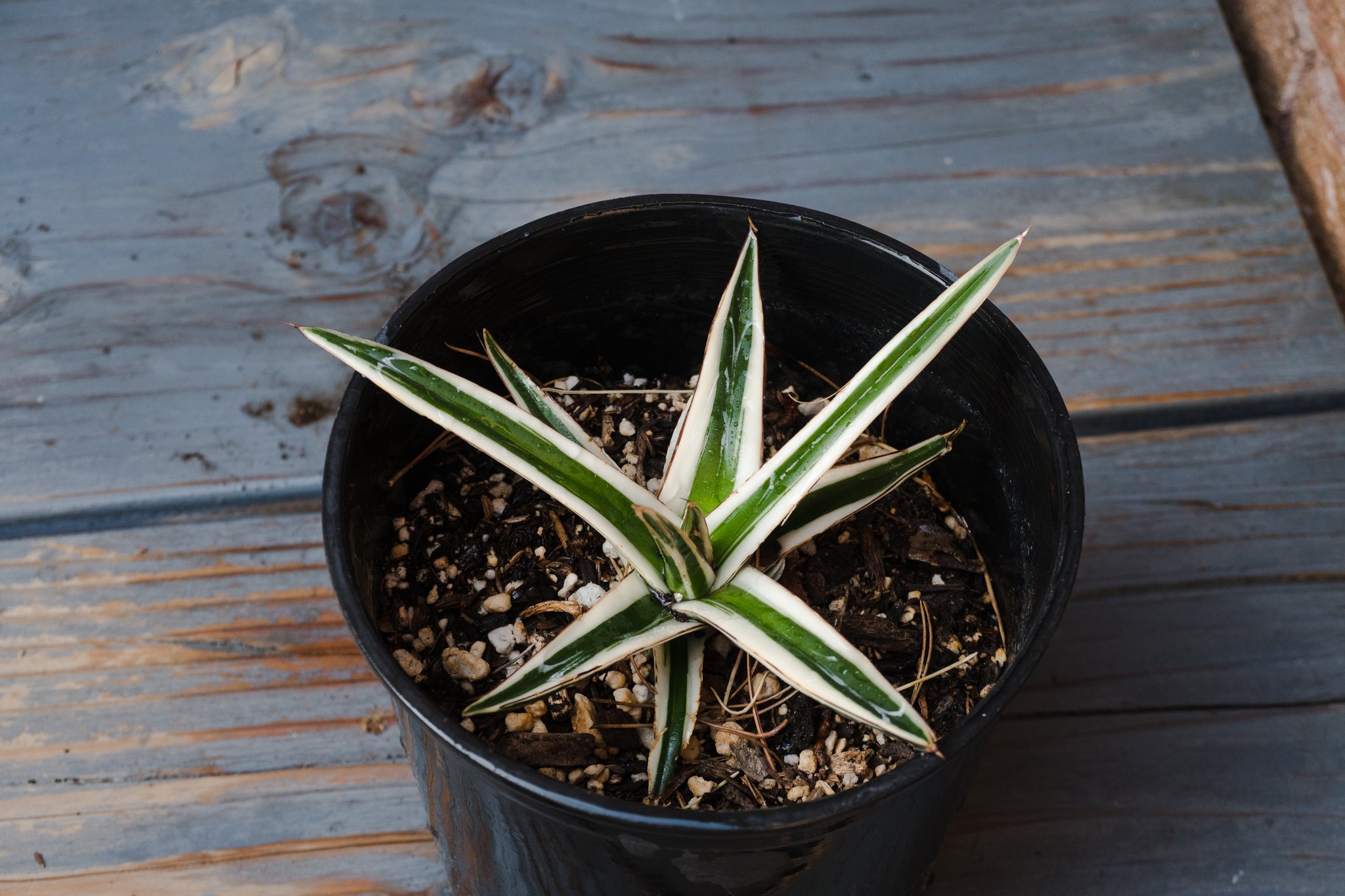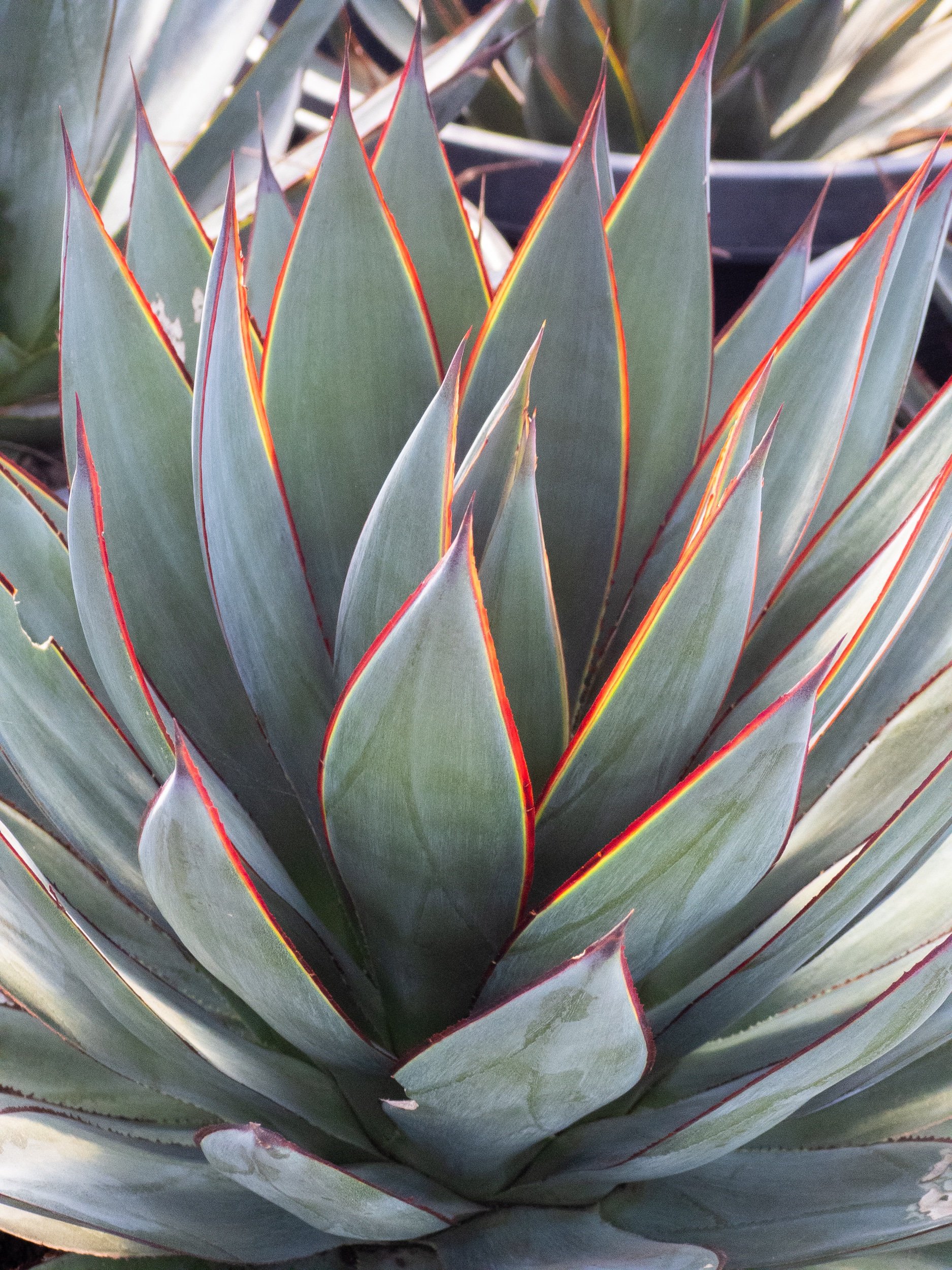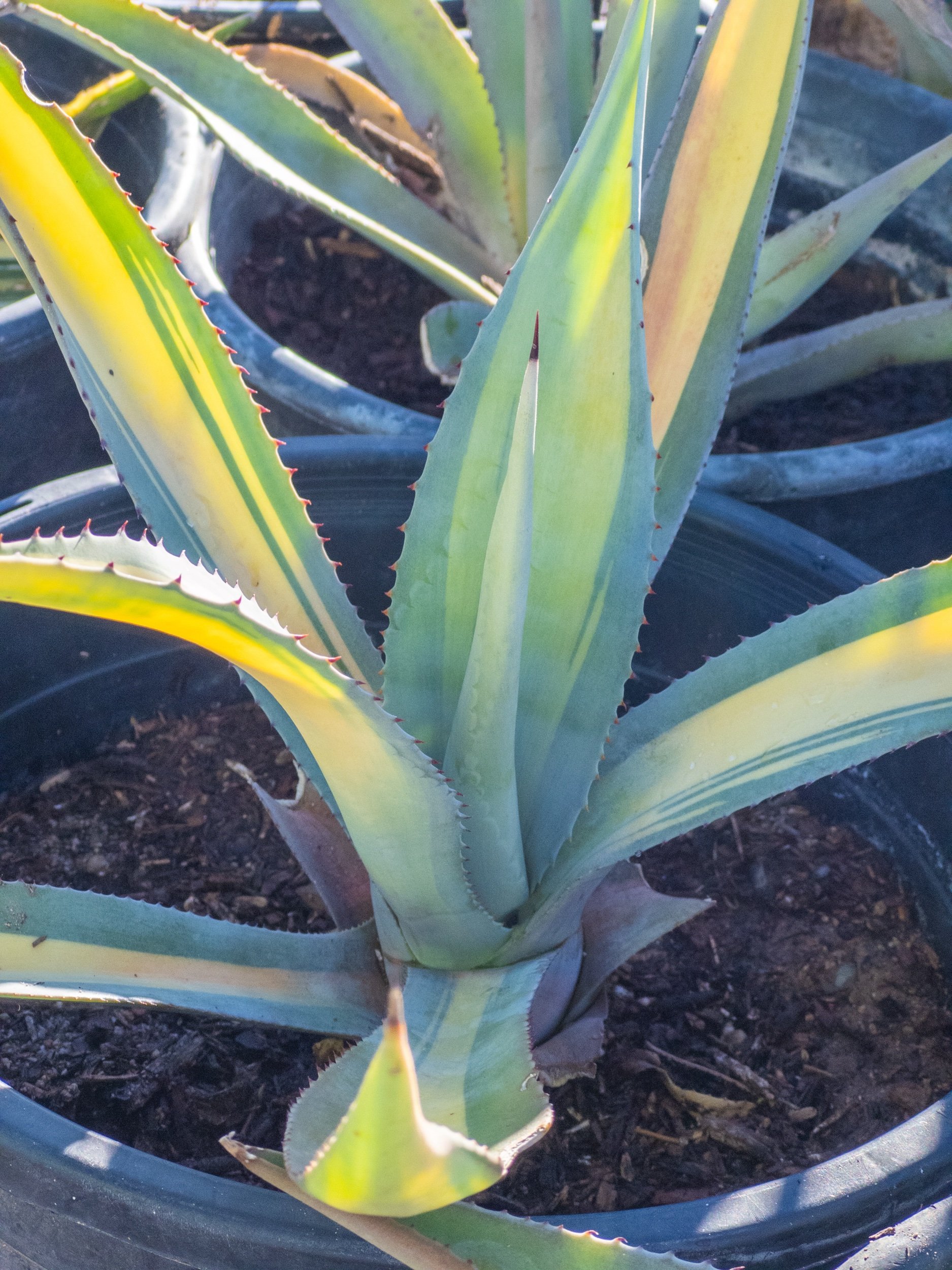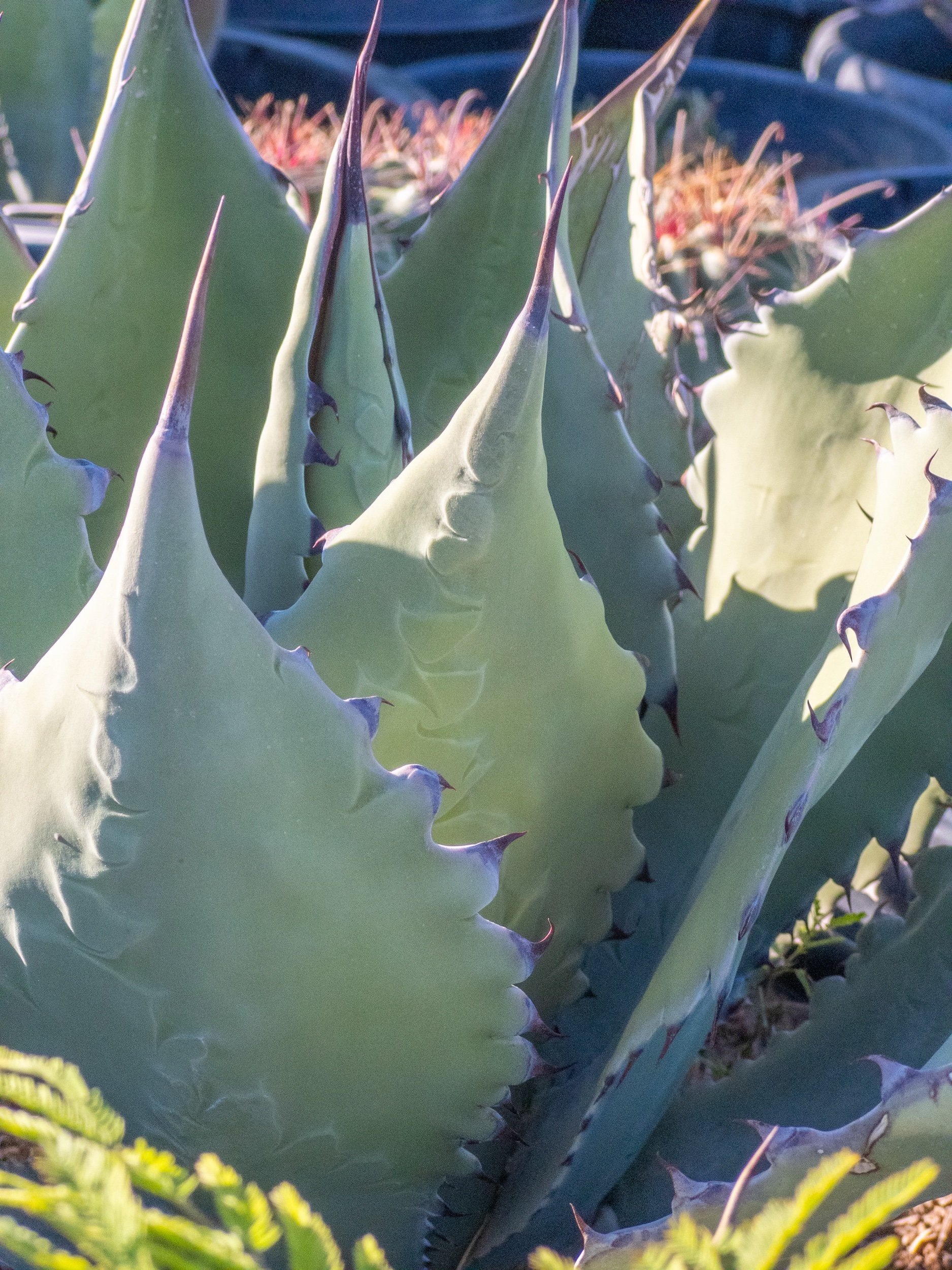 Image 1 of 2
Image 1 of 2

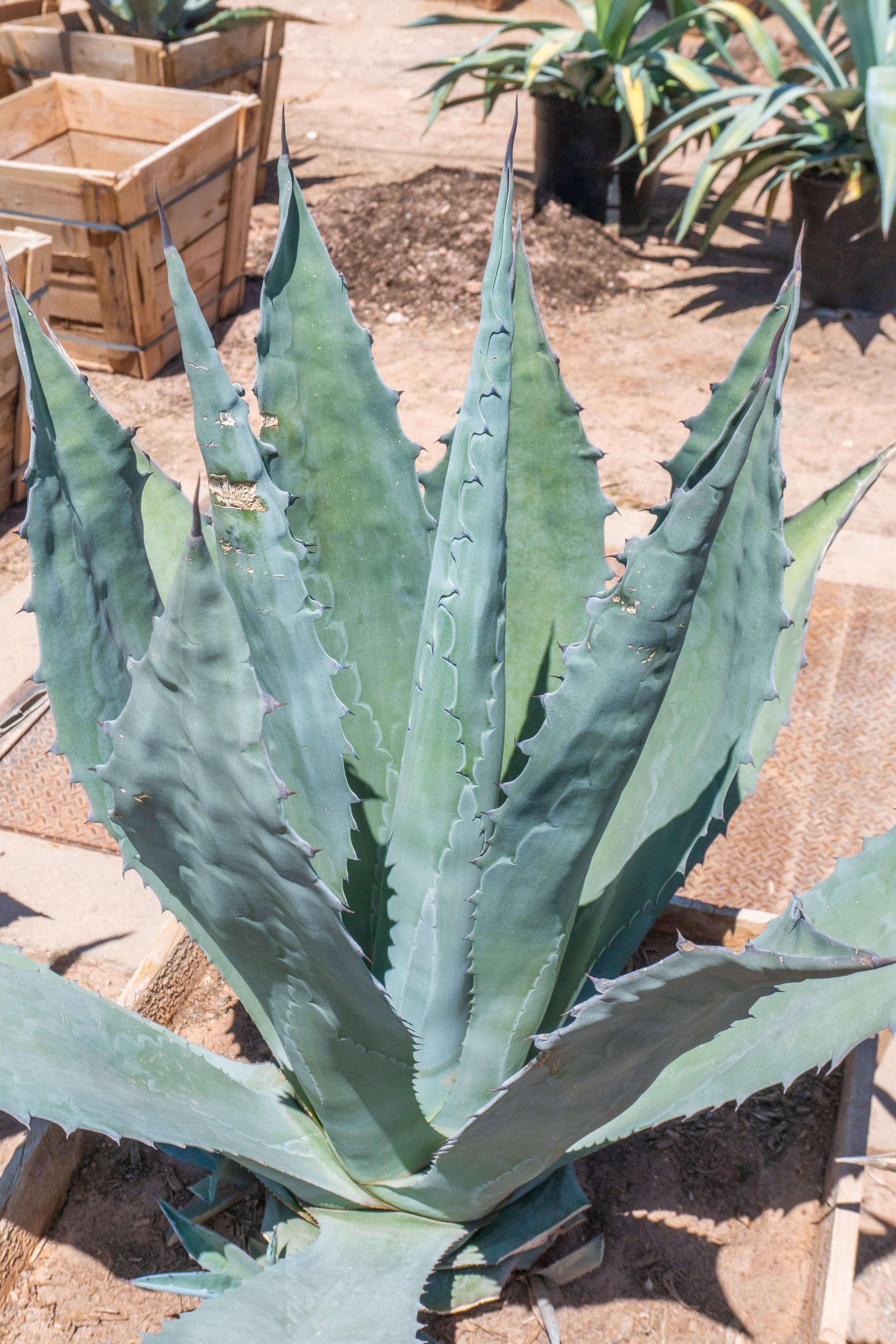 Image 2 of 2
Image 2 of 2



Agave Americana
Agave americana, commonly known as the century plant or maguey, is a large, stunning succulent plant that is native to Mexico but is now widely cultivated in many parts of the world.
In terms of beauty, Agave americana is a dramatic plant that makes a striking statement in any garden or landscape. It features large, fleshy, bluish-green leaves that can grow up to six feet in length and are edged with sharp spines. In the center of the rosette of leaves, it produces a tall, branching inflorescence that can reach up to 30 feet in height, which is covered in a multitude of yellow flowers that attract a variety of pollinators.
In terms of history, Agave americana has been used by indigenous people in Mexico for centuries for a variety of purposes, including food, medicine, and fiber. It is also used in the production of tequila and other alcoholic beverages, as well as in the production of various industrial products.
In terms of environmental needs, Agave americana is a hardy plant that is well-suited to hot, arid climates. It prefers well-drained soil and full sun exposure, and is able to tolerate hot, dry conditions and periodic droughts. It is a low-maintenance plant that does not require regular fertilization or watering, but may benefit from occasional pruning to remove dead or damaged leaves.
It should be noted, however, that Agave americana is a monocarpic plant, meaning that it typically only flowers once in its lifetime, and then dies. This process can take several years, as the plant stores up energy in its leaves before producing the tall inflorescence. After flowering, the plant will produce numerous offsets, or "pups," that can be propagated and grown into new plants.
Overall, Agave americana is a stunning and iconic plant with a rich history and cultural significance. Its dramatic form and pollinator-friendly flowers make it a valuable addition to any garden or landscape, while its versatility and economic importance make it a valuable plant for both traditional and modern uses.
Agave americana, commonly known as the century plant or maguey, is a large, stunning succulent plant that is native to Mexico but is now widely cultivated in many parts of the world.
In terms of beauty, Agave americana is a dramatic plant that makes a striking statement in any garden or landscape. It features large, fleshy, bluish-green leaves that can grow up to six feet in length and are edged with sharp spines. In the center of the rosette of leaves, it produces a tall, branching inflorescence that can reach up to 30 feet in height, which is covered in a multitude of yellow flowers that attract a variety of pollinators.
In terms of history, Agave americana has been used by indigenous people in Mexico for centuries for a variety of purposes, including food, medicine, and fiber. It is also used in the production of tequila and other alcoholic beverages, as well as in the production of various industrial products.
In terms of environmental needs, Agave americana is a hardy plant that is well-suited to hot, arid climates. It prefers well-drained soil and full sun exposure, and is able to tolerate hot, dry conditions and periodic droughts. It is a low-maintenance plant that does not require regular fertilization or watering, but may benefit from occasional pruning to remove dead or damaged leaves.
It should be noted, however, that Agave americana is a monocarpic plant, meaning that it typically only flowers once in its lifetime, and then dies. This process can take several years, as the plant stores up energy in its leaves before producing the tall inflorescence. After flowering, the plant will produce numerous offsets, or "pups," that can be propagated and grown into new plants.
Overall, Agave americana is a stunning and iconic plant with a rich history and cultural significance. Its dramatic form and pollinator-friendly flowers make it a valuable addition to any garden or landscape, while its versatility and economic importance make it a valuable plant for both traditional and modern uses.
Agave americana, commonly known as the century plant or maguey, is a large, stunning succulent plant that is native to Mexico but is now widely cultivated in many parts of the world.
In terms of beauty, Agave americana is a dramatic plant that makes a striking statement in any garden or landscape. It features large, fleshy, bluish-green leaves that can grow up to six feet in length and are edged with sharp spines. In the center of the rosette of leaves, it produces a tall, branching inflorescence that can reach up to 30 feet in height, which is covered in a multitude of yellow flowers that attract a variety of pollinators.
In terms of history, Agave americana has been used by indigenous people in Mexico for centuries for a variety of purposes, including food, medicine, and fiber. It is also used in the production of tequila and other alcoholic beverages, as well as in the production of various industrial products.
In terms of environmental needs, Agave americana is a hardy plant that is well-suited to hot, arid climates. It prefers well-drained soil and full sun exposure, and is able to tolerate hot, dry conditions and periodic droughts. It is a low-maintenance plant that does not require regular fertilization or watering, but may benefit from occasional pruning to remove dead or damaged leaves.
It should be noted, however, that Agave americana is a monocarpic plant, meaning that it typically only flowers once in its lifetime, and then dies. This process can take several years, as the plant stores up energy in its leaves before producing the tall inflorescence. After flowering, the plant will produce numerous offsets, or "pups," that can be propagated and grown into new plants.
Overall, Agave americana is a stunning and iconic plant with a rich history and cultural significance. Its dramatic form and pollinator-friendly flowers make it a valuable addition to any garden or landscape, while its versatility and economic importance make it a valuable plant for both traditional and modern uses.

